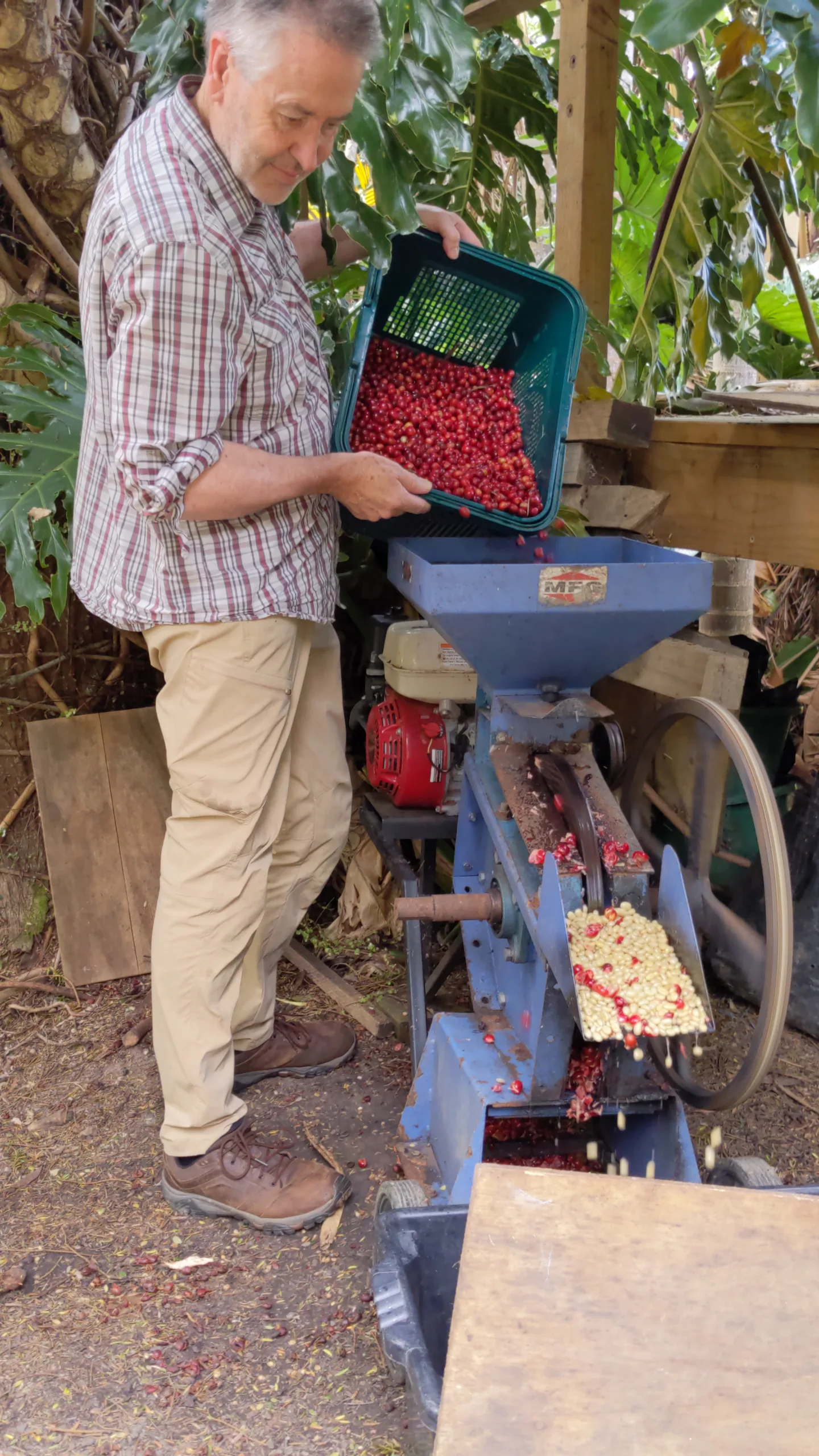
how to measure coffee beans
Suppose you have your new coffee maker and are new to coffee brewing or even a seasoned professional, whether using a French press, v60, Chemex, or an espresso machine.
If you have been wondering about the amount of coffee to use, the ratio of coffee and water, how many grams of coffee to how many grams of water for a standard cup of coffee.
If you have tried golden ratios, 15 ratio, 18g in 36g out 1:2 ratios, and are still struggling.
You have come to the right place.
Density Assisted Extraction (DAE) will solve your problems.
Measuring coffee density is the quickest way to find an initial recipe for coffee brewing. 70% of the time, the coffee will taste great the first time. 95% of the time, it will only require one adjustment step.
Density is used to assist with coffee extraction in 3 ways.
1. Firstly, density has been used for recipe generation.
The correlation between density, roast level, and extraction required is very high. To even the casual observer, get a very darkly roasted bean, and you can easily break it with your fingers; the bean is not very dense.
With a very lightly roasted bean, it is impossible to break with your fingers; even a hammer has difficulty, and the bean is very dense.
If you under-extract, the coffee is sour; if you over-extract, the coffee is bitter.
Density.coffee has collected the density of over 4,000 bags of coffee globally. 99.7% fall within the determined density range.
The SCA Standards for each extraction parameter are amortized over this density range.
For example, for espresso ratio:
1:1 Ristretto (extract the least)
1:2 Normale
1:3 Lungo
1:4 Lungo allonge (extract the most)
Any individual ratio can be expressed as a %EspressoRatio within the 1-4 range.
A mathematical equation solves the problem of what is the %EspressoRatio that equals %MeasuredDensity.
The same calculation principle is used for each parameter using SCA standards.
Maths generates recipes for each coffee-making method to cover the density range, from extracting the least to the most. Solving coffee extraction with measurement and maths is analogous to weather prediction modeling.
2. Secondly, measuring coffee density assists with extraction is by selecting an initial recipe.
Looking at the frequency distribution of the 4000 samples, the number that could be successfully extracted with the SCA Golden fixed recipe 1:2 ratio and grind size adjustments is 20%—only 1 chance in 5 of successful extraction.
Whereas using the recipe selected by measuring density, 70% of the time, or 3.5 chances in 5 of getting the extraction right the first time. It’s much better odds for the starting extraction.
3. Thirdly, density assists with extraction by providing stepped adjustments.
Grind size adjustments are constrained by physics. Grind too fine, and your puck chokes or your v60 stalls. If the grind is too coarse, there is insufficient puck pressure or resistance for sufficient extraction time. It is not possible by grind adjustments alone to cover the extraction requirements for the entire density range from the fixed recipe.
However, the mathematical model has calculated recipes more suited to achieving successful extractions across the density range.
Moving in 20 x 0.1g/ml density steps in either direction significantly alters the extraction by changing all the extraction parameters in concert. 8 jumps cover the entire range.
The direction you need to move is determined by taste. If it is sour, it is under-extracted; use the Extract More button that adds 20 to the entered density and gives you a new recipe. If it is bitter, it is over-extracted; use the Extract Less button, subtracting 20.
Measuring the density 70% of the time gets it right the first time, but it also gets you a closer starting position, so 95% of the time, a single adjustment is all that is required. Very rarely, two adjustments are required. Even more rarely, you may face a coffee or roast defect that can’t be fixed by extraction.
You don’t have to measure the density. You could use the default (median) recipe and then use the Extract More/Less adjustment steps to achieve the result. However, 80% of the time, the starting recipe would not be correct, and it may take more adjustment steps to reach the required extraction.
Tools needed for measuring density:
- Graduated cylinder 100ml Class A Tolerance ±0.05ml
($10 on Amazon, or in NZ) - Digital Scale, accurate to at least +- 0.1gms. (Acaia Lunar is awesome)
- An optional extra is a funnel to help pour the beans into the cylinder – or you can use a barista jug.
- An optional extra is a short piece of 25mm dowel as a tamper.
- Roasted Coffee beans
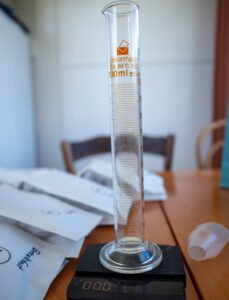
Method:
1. Place the empty 100ml cylinder on the scales and zero.
2. Fill the cylinder to near the 100ml line. Tap the coffee beans down and pack them level with something like a piece of dowel or rolled-up cardboard. The object is to get it level near the 100ml line by adding coffee beans and packing it level. Read how many milliliters you have.
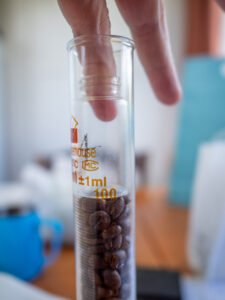

3. Then, weigh the cylinder with the coffee beans. If this is a light roast, the coffee beans will be heavy. as much as 48 grams. If your roast is dark, the coffee beans weigh less, as little as 32 grams.
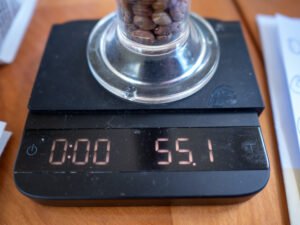
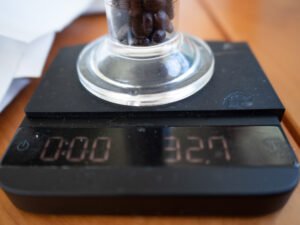
4. We need the coffee bean density in g/ml, so divide the weight by the volume. For example, 41.3/97= 0.425
This coffee bean density value tells you roughly where this coffee roast level falls in the density range. Enter this number in the search box at density.coffee to find the starting position for your extraction.
5. Taste the coffee. If it is sour, you have under extracted, use the Extract More button and make it again. If it is bitter, you have over-extracted, use the Extract Less button and make it again.
